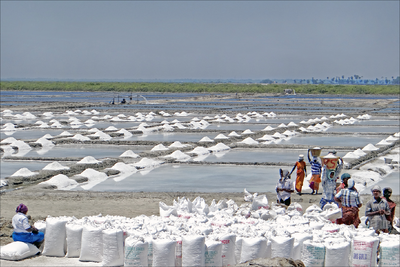Difference between revisions of "Evaporation of Solutions"
| Line 4: | Line 4: | ||
===About Evaporation of Solutions=== | ===About Evaporation of Solutions=== | ||
| − | : When you heat a [[solution]] the [[liquid]] will [[evaporate]] leaving the [[solid]] behind. | + | : When you heat a [[solution]] the [[liquid]] will [[evaporating|evaporate]] leaving the [[solid]] behind. |
{| class="wikitable" | {| class="wikitable" | ||
| Line 23: | Line 23: | ||
===Meaning=== | ===Meaning=== | ||
'''Evaporation of a solution''' is a way to recover the [[solute]] that has been [[dissolve]]d in a [[solvent]]. | '''Evaporation of a solution''' is a way to recover the [[solute]] that has been [[dissolve]]d in a [[solvent]]. | ||
| + | |||
| + | ===About Evaporation of Solutions=== | ||
| + | : The '''evaporation of solutions''' recovers the [[solute]]s but loses the [[solvent]]. | ||
| + | : '''Evaporation of solutions''' can be done by directly heating the [[solution]] or by giving time for the [[liquid]] to [[evaporating|evaporate]] at low [[temperature]]s. | ||
Revision as of 11:56, 27 September 2018
Contents
Key Stage 2
Meaning
Evaporation of a solution is a way to get back a solid that has been dissolved in a liquid.
About Evaporation of Solutions
| You can separate salt from the water by evaporating the water in an evaporating dish. |
Examples
| These people collect salt by putting sea water in small ponds and allowing the warm temperatures to evaporate the water away leaving the behind the salt. |
Key Stage 3
Meaning
Evaporation of a solution is a way to recover the solute that has been dissolved in a solvent.


